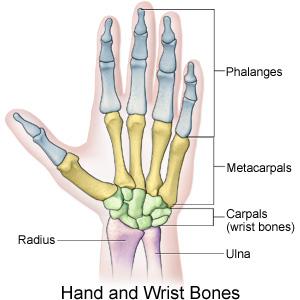Piano Key Sign
Original Editor - Joseph Ayotunde Aderonmu
Top Contributors - Joseph Ayotunde Aderonmu, Wendy Snyders and Chelsea Mclene
Purpose[edit | edit source]
The Piano-Key Sign Test is a test carried out for the clinical assessment of wrist instability.[1] It is used as an indicator for distal radio-ulnar joint instability and tears of the triangular fibrocartilage complex of the wrist.[1]
Technique[edit | edit source]
In the Piano-key Sign Test, the wrist is supported in pronation and the hand is stabilized in the neutral position. Force is applied to the head of ulna.
Positive Result[edit | edit source]
The test is positive if the ulnar head goes back to its anatomic position after the removal of the force applied to the ulnar head.[2] This bears resemblance with when a piano key springs up after the force from a finger is removed from the key, hence, the name "piano-key" sign.[2] This instability and pain are judged relative to the contralateral wrist. [3]
Negative Result[edit | edit source]
No instability or movement observed on removal of pressure on the ulnar head.
Instructional Video[edit | edit source]
Sensitivity/Specificity[edit | edit source]
The Piano-key Sign Test has a specificity of 0.96 and a sensitivity of 0.59. [4]
References[edit | edit source]
- ↑ 1.0 1.1 Vezeridis PS, Yoshioka H, Han R, Blazar P. Ulnar-sided wrist pain. Part I: anatomy and physical examination. Skeletal radiology. 2010 Aug;39(8):733-45.
- ↑ 2.0 2.1 American Society for Surgery of the Hand. The hand: examination and diagnosis. Churchill Livingstone; 1990.
- ↑ Duke Orthopaedics: Wheeless’ Textbook of Orthopaedics[last accessed February 11, 2022].
- ↑ Lindau T, Adlercreutz C, Aspenberg P. Peripheral tears of the triangular fibrocartilage complex cause distal radioulnar joint instability after distal radial fractures. The Journal of hand surgery. 2000 May 1;25(3):464-8.







